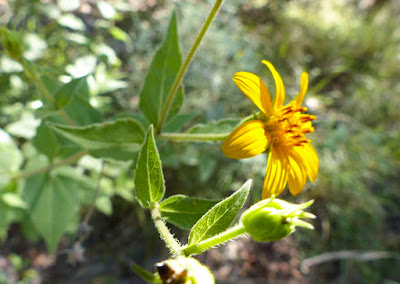One of my favorite destinations is Scotland, and our last trip there was topnotch. I discovered new places to explore, and savor, and bird––all while delighting in the Scottish brogue.
RSPB Reserve, Loch Garten (All photos by Narca)
On this April trip, I was determined to see, at long last, a certain grail bird: the Western Capercaillie, a giant grouse nearly the size of a turkey. At the RSPB (Royal Society for the Protection of Birds) reserve of Loch Garten, a hide (or blind) is located so that observers may glimpse, at a distance, displaying capercaillies––if they are lucky! And we were lucky, sort of.
A male capercaillie was displaying behind a grove of small pine trees, and by watching carefully, we glimpsed first one part of the grand bird, then another. Pieced together, the sum of the parts looked rather like this:
Western Capercaillie (Pen-and-ink drawing by Narca)
As a prelude to that exciting day, I found an AirBnB cottage at Nethy Bridge, which proved to be the perfect base for exploring the region. It was located only about 5 miles from Loch Garten and the capercaillies, and next to a wild woodland with hiking trails––Dell Woods in the Abernethy National Nature Reserve. The reserve protects remnants of the ancient Caledonian forest. If that location appeals to you, search AirBnB for Saddleback Cottage (The Bothy) at Nethy Bridge.
Regional map, highlighting Nethy Bridge and Loch Garten
Trail sign at Dell Woods in Abernethy National Nature Reserve
Hiking trail in Abernethy National Nature Reserve
A Song Thrush forages along the hiking trail.
At dusk we ventured into Dell Woods, looking for night birds, and were very excited one evening to find displaying Eurasian Woodcock, hurtling across the twilight sky.
Habitat for displaying Eurasian Woodcock, a mix of woodland and open meadows, dissected by rivulets (photos above and below)
Caledonian forest
Besides the capercaillies at Loch Garten, another spectacular grouse lives nearby––the Black Grouse. RSPB has a screened viewing area where courting Black Grouse may be seen. The kind folks at Loch Garten can tell you whether this lek is active, and where to find it.
We were sent to the blind at Tulloch Moor, where we watched for a while, without success. As we were contemplating leaving the blind, we began to hear a grouse farther down the road. A quarter-mile walk brought us to a very unexpected sight: a male Black Grouse was at the very top of a birch tree, slowly pivoting and calling. He periodically interrupted his arboreal display to nip a birch bud. These birds are supposed to display on the ground! And that was the last time in Scotland that I left my camera behind.
Black Grouse habitat at Tulloch Moor
Black Grouse leks are very easily disturbed, so great care must be taken in approaching one. We withdrew quietly from our feeding-and-displaying male before he even knew we were there. The best way to see displaying Black Grouse is to join one of the guided minibus safaris run by the RSPB in April and May. Check their website for details.
If you are planning a trip to Britain, a year's membership in the RSBP is very worthwhile. You'll gain entry to all of their reserves, in addition to supporting conservation efforts in Britain.




























